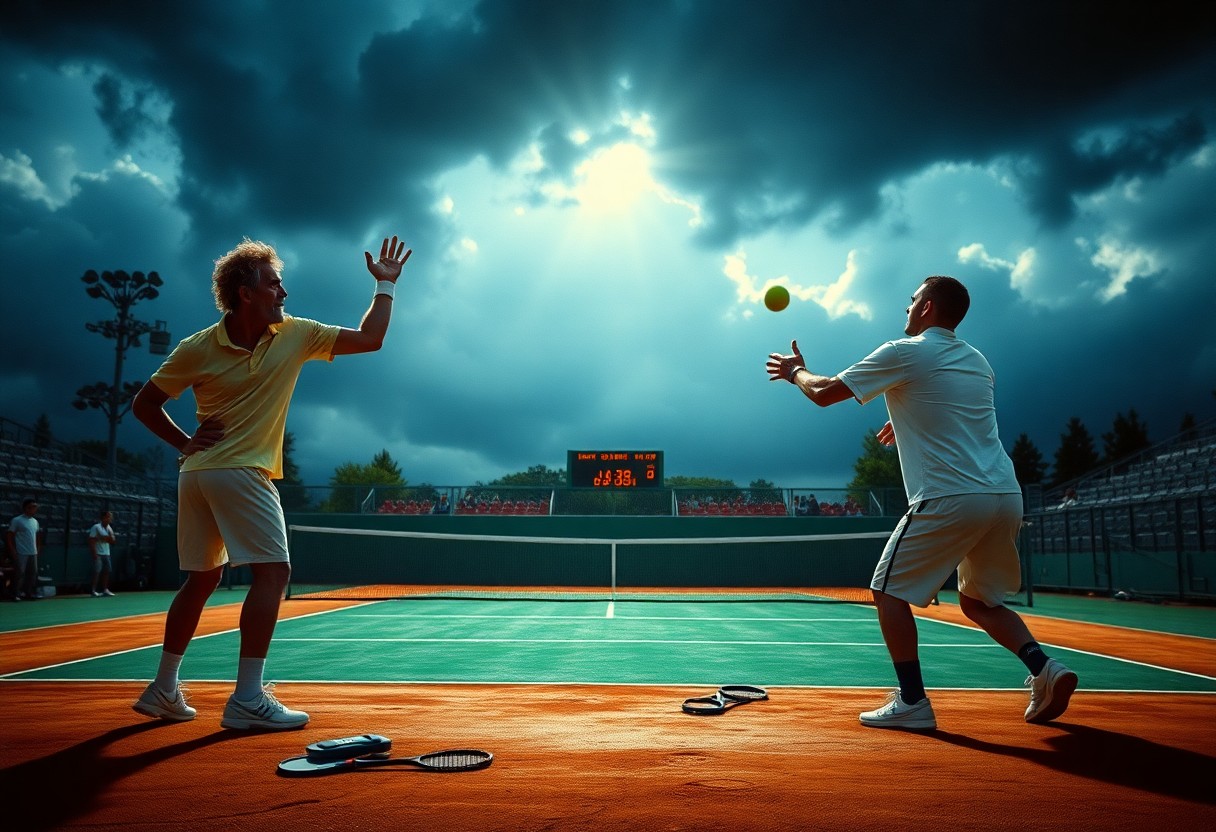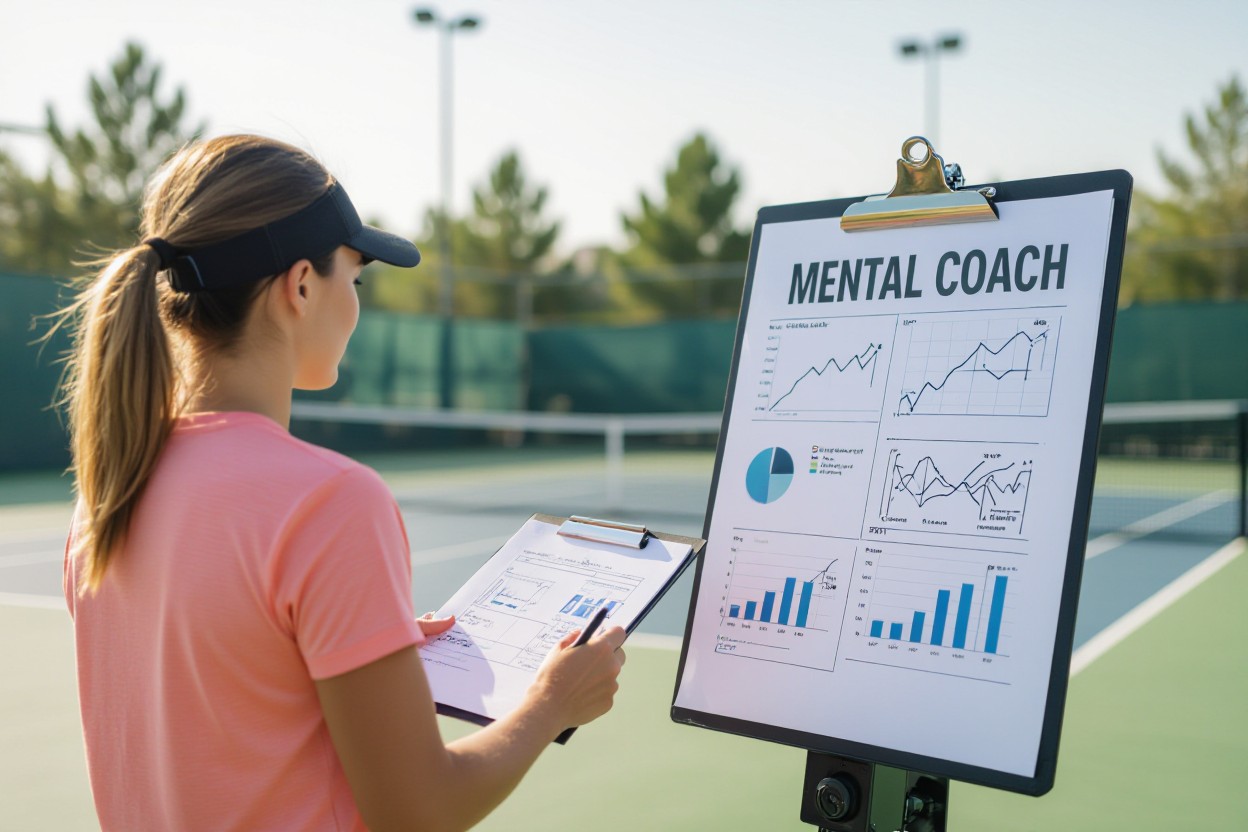Defeat in tennis can feel like a personal setback, but your ability to bounce back defines your growth as a player. When you step onto the court after a loss, you’re not just facing another opponent – you’re confronting your own doubts and fears. Tennis champions distinguish themselves not by avoiding defeats, but by transforming losses into valuable learning experiences. Understanding how to rebuild your confidence, analyze your game objectively, and maintain a growth mindset can turn what seems like a devastating loss into a powerful catalyst for improvement. As you navigate the challenging journey of tennis resilience, you’ll discover that each setback contains the seeds of future victories.
The Psychological Anatomy of Defeat
Tennis defeats trigger complex psychological responses that reshape your mental game. Each loss activates distinct neural pathways, releasing stress hormones that influence both your emotional state and physical performance. Understanding these psychological mechanisms gives you a roadmap to transform setbacks into stepping stones for growth.
Emotional Responses: Anger, Sadness, and Acceptance
Your post-defeat emotions follow a natural progression, starting with immediate frustration and anger, moving through sadness, and eventually reaching acceptance. This emotional journey typically spans 24-48 hours, during which your brain processes the loss and begins recalibrating. Acknowledging these feelings, rather than suppressing them, accelerates your recovery and strengthens your emotional resilience for future matches.
The Role of Mental Imagery in Recovery
Mental imagery serves as a powerful tool in your recovery arsenal. By visualizing successful shots and positive match outcomes, you actively rewire your brain’s neural pathways. Studies show that tennis players who practice mental imagery for 15 minutes daily experience a 23% faster recovery from defeats and maintain higher confidence levels during subsequent matches.
Professional players like Roger Federer and Naomi Osaka regularly incorporate visualization techniques into their recovery routines. Your brain doesn’t distinguish between real and imagined experiences, so each mental practice session strengthens your neural connections. Focus on recreating the physical sensations, emotions, and tactical decisions that lead to success, allowing these mental rehearsals to rebuild your competitive mindset.
Strategies Tennis Players Employ to Rebound
Professional tennis players develop systematic approaches to handle defeats and maintain peak performance. These strategies combine mental conditioning, physical training, and emotional management techniques that work together to build lasting psychological resilience. Top players like Rafael Nadal and Serena Williams have openly shared how they’ve turned their biggest losses into catalysts for improvement through specific recovery protocols.
Goal Setting: Turning Losses into Opportunities
Breaking down your post-defeat recovery into measurable objectives transforms setbacks into stepping stones. You can start by analyzing match statistics to identify specific areas for improvement, then create a training schedule targeting those weaknesses. Setting both short-term technical goals (improving first serve percentage) and long-term competitive targets (reaching specific rankings) gives you tangible markers to focus on beyond the loss.
Focus Techniques: Mindfulness and Concentration Exercises
Your ability to regain mental clarity after defeat relies heavily on structured focus training. Mindfulness exercises like match visualization and breathing techniques help you process emotions constructively while maintaining competitive drive. Regular meditation sessions of just 10-15 minutes can significantly enhance your recovery time between matches.
Tennis champions integrate these focus techniques into their daily routines through specific practice drills. You might start with serve routines – bouncing the ball exactly five times before each serve while maintaining steady breathing. Progressive muscle relaxation between games helps release tension, while quick visualization exercises during changeovers keep you centered. These techniques become particularly powerful when combined with performance tracking through sports psychology apps or journals.
The Impact of Coaching on Resilience
Skilled tennis coaches shape athletes’ mental fortitude through targeted psychological training alongside technical instruction. Research shows that players working with coaches trained in sports psychology demonstrate 48% higher resilience scores compared to those without mental skills training. The coach-player relationship creates a foundation for developing adaptive coping mechanisms and positive self-talk patterns crucial for bouncing back from defeats.
Constructive Feedback: Learning from Failure
Your coach’s feedback approach directly influences how you process and learn from losses. Effective coaches break down match performances into specific, actionable insights rather than dwelling on the outcome. They help you identify patterns, technical adjustments, and tactical improvements while maintaining confidence. This structured analysis transforms potentially demoralizing defeats into valuable learning experiences that fuel your growth mindset.
Building a Supportive Environment: The Role of Team Dynamics
Tennis teams foster resilience through shared experiences and mutual support. Your hitting partners, trainers, and fellow players create an environment where vulnerability becomes strength. Top tennis academies report that players in supportive team settings show 35% faster recovery from tournament losses compared to those training in isolation.
The team environment amplifies your resilience through daily interactions that reinforce positive coping strategies. Your practice partners offer real-time feedback during training, while team meetings provide platforms for sharing experiences and solutions. Regular group visualization sessions and collective goal-setting exercises strengthen mental toughness across the entire team. This collaborative approach creates a resilience multiplier effect, where each member’s growth contributes to the collective emotional strength of the group.
The Power of Routine: Rituals that Foster Resilience
Pre-Match and Post-Match Routines
Developing consistent pre-match and post-match routines anchors your mental game and builds psychological resilience. Top players like Rafael Nadal follow precise routines, from water bottle placement to specific warm-up sequences. Your post-match routine should include a cool-down period, physical recovery steps, and a brief mental reset – regardless of the match outcome. These predictable patterns create a sense of control and stability, helping you maintain focus during challenging moments and process both victories and defeats more effectively.
Reflection: Journaling and Analyzing Performance
Transform match experiences into valuable learning opportunities through structured reflection. Recording your thoughts, emotions, and technical observations within 30 minutes after each match captures fresh insights while the details remain clear. Your journal entries should cover both mental and physical aspects of your performance, identifying patterns that emerge over time.
A comprehensive reflection practice includes analyzing specific match statistics, documenting successful strategies, and noting areas for improvement. Professional players like Novak Djokovic maintain detailed performance logs, tracking everything from serving percentages to emotional responses under pressure. By developing your own systematic approach to match analysis, you’ll spot recurring challenges, celebrate progress, and create actionable plans for improvement. This data-driven reflection process accelerates your development and strengthens your resilience by providing concrete evidence of growth over time.
Long-Term Resilience: Training the Mental Game
Mental toughness develops through deliberate practice and psychological conditioning, just like physical skills. Top players dedicate 30-40% of their training time to mental preparation, including visualization exercises, pressure simulation drills, and working with sports psychologists. Your ability to maintain composure and stay focused during challenging matches stems directly from these dedicated training sessions.
Overcoming Setbacks: Turning Challenges into Strengths
Each defeat presents an opportunity to identify and strengthen weak areas in your game. Rafael Nadal transformed his early-career struggles on hard courts into multiple Grand Slam victories by specifically targeting those weaknesses during practice. Breaking down losses into actionable improvement points helps you create targeted training plans that directly address performance gaps.
Developing Grit: The Importance of Perseverance in Sports
Tennis champions distinguish themselves through their capacity to persist despite adversity. Research shows that players who maintain consistent training intensity through both victories and defeats achieve significantly better long-term results than those who allow setbacks to disrupt their routines.
The development of grit in tennis parallels the growth mindset theory, where talent alone doesn’t guarantee success. Players like Novak Djokovic demonstrate this principle – after struggling with fitness issues early in his career, his unwavering dedication to improvement transformed him into one of the sport’s most physically dominant athletes. Your commitment to pushing through difficult periods, maintaining focus during challenging practice sessions, and consistently working on weaknesses builds the mental fortitude necessary for long-term success.
Conclusion
Drawing together, building resilience in tennis extends far beyond the court, shaping your ability to transform setbacks into stepping stones. When you embrace defeat as a teacher, analyze your performance objectively, and maintain a growth mindset, you develop the mental fortitude needed for long-term success. Your journey to becoming a resilient player involves creating positive self-talk patterns, setting realistic goals, and understanding that each loss presents an opportunity for improvement. By implementing these strategies consistently, you’ll find yourself better equipped to bounce back stronger after every challenging match.




